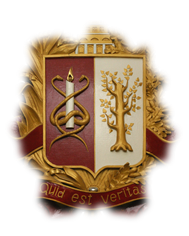Issue: 2016, Vol. 21, No. 1
LOW INTENSITY LASER RADIATION IN THE REHABILITATION IN CHILDREN WITH BRONCHIAL ASTHMA: PATHOGENETIC SUBSTANTIATION AND EFFECTIVENESS
- Keywords
- low intensity laser radiation, rehabilitation, children, bronchial asthma
- Abstarct
- Objective - to determine the character of capillary blood flow alterations, morphofunctional parameters of blood cells (erythrocytes, thrombocytes) and endothelium in order to substantiate pathogenetically the necessity and to estimate the efficacy of low intensity laser radiation in medical rehabilitation complex in children with bronchial asthma. Materials and methods. 225 children with bronchial asthma aged 6-14 years were examined at Ivanovo regional clinical hospital.35 practically healthy children were enrolled in control group. The indices of peak expiratory flow rate (morning/evening) in the self control diary were registered daily. Morphometric parameters, surface architectonics, erythrocyte rheologic features, morphological parameters, thrombocyte functional and metabolic features, endothelial system status, antithrombin III level, nitrogen oxide level, capillary blood flow status, external breathing function were examined. Randomized control study was additionally performed in order to define how various therapeutic complexes influenced the character of microhemodynamic disorders; 64 children aged 10-14 years with bronchial asthma of middle severe grade in aggravation period were enrolled in the study; these patients were administered budesonide and formoterol. Basic group was formed of 29 children who were additionally administered low intensity laser radiation, comparison group was formed of 35 subjects who were not administered low intensity laser radiation. Complex laboratory instrumental examination was performed before the therapy beginning and in 4 weeks after the therapy beginning. Results. The authors along with respiratory disorders revealed the decrease of tissue perfusion magnitude, functioning deterioration in tissue blood flow regulation mechanisms, low vasomotor activity of microvessels, the presence of stasis phenomena in microcirculation system in patients with bronchial asthma aggravation. At all stages of pathological process microhemodynamic alterations were associated with erythrocyte morphofunctional status alterations (microcytosis, spherulation, architectonics disturbance, deformability decrease, aggregation increase, erythrokinetic equivalence disorder) and thrombocyte morphofunctional status (aggregation activity increase, bioamine and nitrate ions intracellular content, lipoperoxidation processes and thrombocytic biomembrane hardening). In aggravation of the disease the increase of circulating endotheliocytes quantity, endothelin-1 level, nitrite ions level, von Willebrandt factor activation were determined on the background of diminished antithrombogenic activity of vascular wall. The above mentioned alterations did nor restore in the disease control achievement and determined the persistence of capillary trophic insufficiency syndrome. In the randomized study it was determined that more expressed restoration of the lung respiratory function parameters (daily variability of peak expiration flow rate and functional vital capacity) and that of microhemodynamics (amplitudes in low fluctuations diapason) were occurred in low intensity laser radiation. Morphofunctional properties of blood cells (erythrocytes, thrombocytes) and endothelium were normalized in patients who were treated by low intensity laser radiation unlike from the comparison group. Conclusions. Development of bronchial asthma in children was accompanied by polydirected alterations of capillary blood flow, structural and functional indices if blood cells and endothelium; these changes determined the formation of capillary trophic insufficiency and the latter persistently remained in the disease control achievement on the background of supporting therapy. The introduction of low intensity laser radiation in the complex scheme of rehabilitation in children with bronchial asthma maintained the restoration of the examined parameters and respiratory function, reflected clinical efficacy and advantages of this therapeutic approach.


 Глазова
Глазова